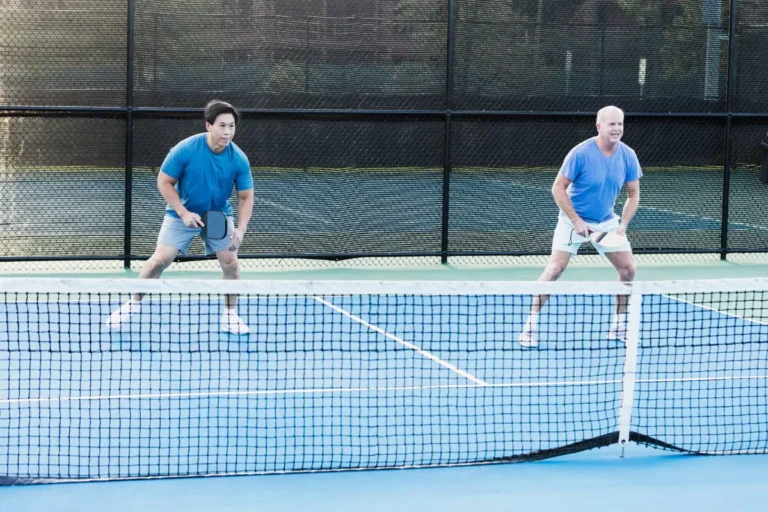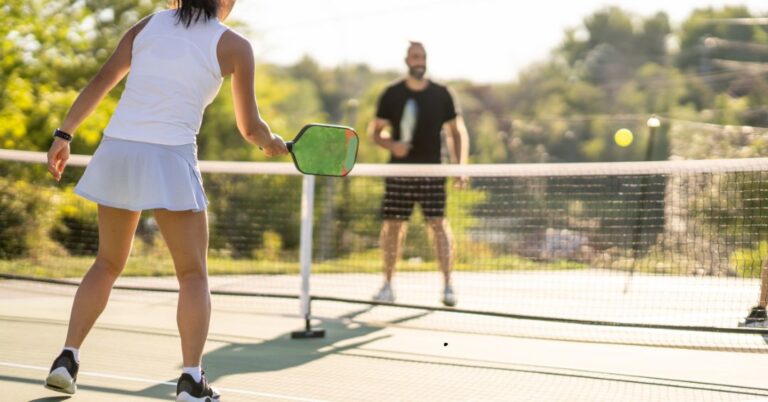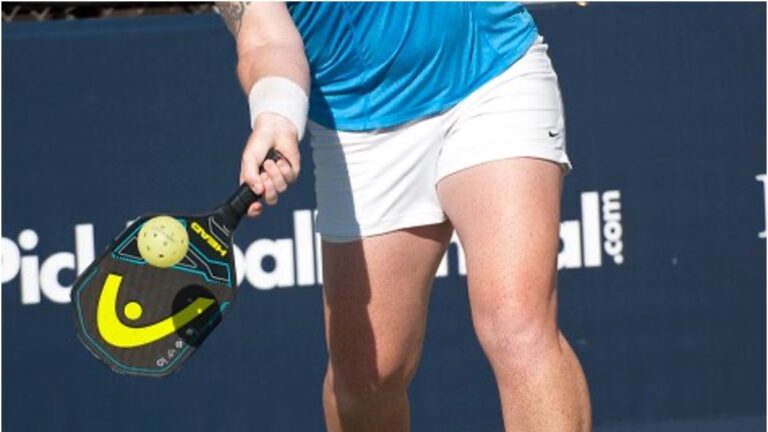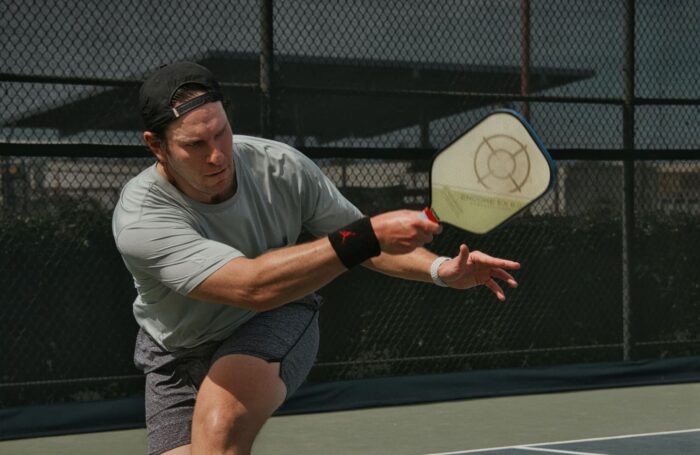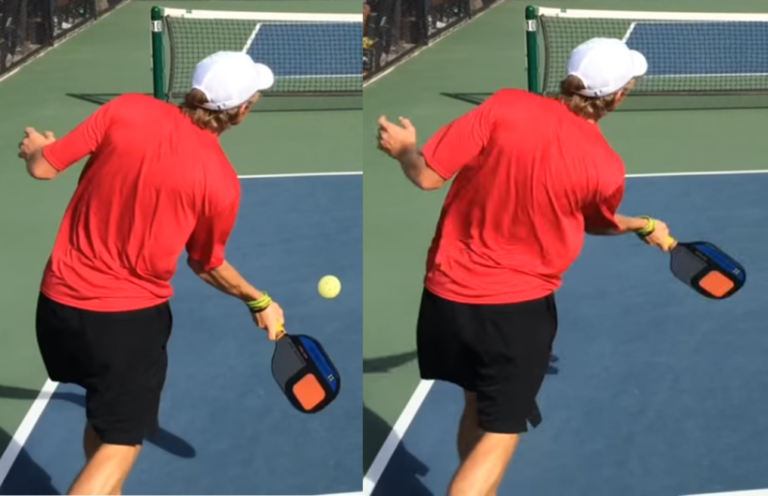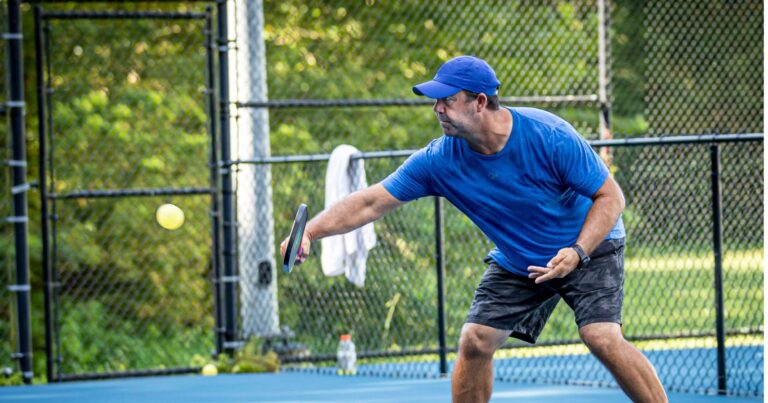Pickleball Poaching Tactics
Key Takeaways
- Poaching in pickleball involves crossing the centerline to hit a shot intended for your partner, a strategic move to pressure opponents.
- Proper poaching requires situational awareness, communication with your partner, and sound judgment on when to poach and when to refrain.
- Mastering poaching techniques like positioning, timing, and shot selection can elevate your competitive pickleball game.
- While poaching is a potent strategy, it should be employed judiciously, especially in recreational settings with less experienced players.
Mastering Pickleball Poaching Tactics for Competitive Play
Pickleball poaching is a strategic move where a player crosses to their partner’s side to make a play, typically to pressure opponents and seize control of the game. Effective poaching can dramatically shift game dynamics, making it essential to master for competitive players. This introduction outlines key tactics for successful poaching, enhancing teamwork and maximizing court coverage.
Introduction to Pickleball Poaching
Poaching, in its simplest form, is the act of crossing the centerline of the pickleball court to hit a shot intended for your partner. It’s a bold, aggressive move that can catch your opponents off guard and shift the momentum of the game in your favor. But here’s the kicker – poaching is not just a random act of court invasion; it’s a calculated, strategic decision that requires impeccable timing, positioning, and communication with your partner.
The strategic importance of poaching cannot be overstated. When executed correctly, it can put immense pressure on your opponents, forcing them to hit higher-quality shots and limiting their angles of attack. It’s like a game of chess on a smaller scale, where every move counts, and the slightest miscalculation can cost you the game.
When to Utilize Poaching in Pickleball
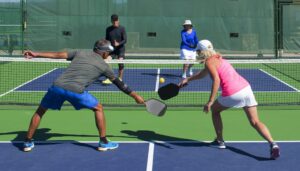
As with any strategic move, poaching in pickleball has its time and place. Knowing when to poach and when to hold back is the key to mastering this tactic. Let’s take a look at some situations where poaching can be a game-changer.
Situations Ideal for Poaching
During High-Floating Shots
One of the most common and effective scenarios for poaching is when your opponents hit a high, floating shot. These types of shots are perfect opportunities for you to swoop in, take control of the court, and smash the ball back with authority. Imagine your opponent’s faces when you effortlessly volley that floater back at them with the ferocity of a pickleball hurricane.
When Opponents Target Your Partner
If you notice that your opponents are consistently targeting your partner with their shots, it might be time to unleash the poaching beast. By poaching, you can relieve the pressure on your partner and catch your opponents off guard, turning the tables in your favor.
To Shift Game Momentum
Poaching can be a powerful tool to shift the momentum of a game that’s not going your way. If you find yourself in a slump, a well-timed poach can be the spark that reignites your team’s fire and throws your opponents off their rhythm.
Situations to Avoid Poaching

While poaching can be a game-changer, there are situations where it’s best to keep your feet firmly planted on your side of the court. Here’s a list of scenarios where poaching should be avoided:
- In recreational play or social settings
- Against less experienced or beginner players
- When your partner prefers a more conservative playstyle
- During low, dinking shots that don’t offer a strategic advantage
In Recreational Play
Let’s be real – not everyone is interested in playing pickleball like it’s a high-stakes tournament. In recreational or social settings, poaching can be seen as a bit too aggressive and might rub some players the wrong way. Unless you’re playing with a group of fellow poaching enthusiasts, it’s best to keep the poaching to a minimum in these situations.
Against Less Experienced Players
Poaching against less experienced players can be akin to bringing a nuclear warhead to a water balloon fight. It’s overkill and can quickly suck the fun out of the game for those still learning the ropes. Save the poaching tactics for when you’re playing against opponents who can appreciate the strategic nuances of the game.
Techniques for Successful Poaching
Now that we’ve covered when to poach and when to hold back, let’s dive into the nitty-gritty of how to execute a successful poach.

Basic Steps for Executing a Poach
Executing a successful poach involves a series of well-coordinated steps:
- Spotting the Opportunity: Keep a keen eye on the ball’s trajectory and anticipate when a high, floating shot presents an ideal poaching opportunity.
- Positioning and Movement: As your partner hits the shot that prompts your poach, start moving along a diagonal “V” formation, cutting off the angles for your opponents. This movement generates momentum for your poach and puts you in prime position to take the shot.
- Timing the Poach: Timing is everything. You’ll need to carefully time your poach, neither too early nor too late, to capitalize on the opportunity effectively.
- Executing the Shot: Once in position, execute your poach with precision and power, aiming to put maximum pressure on your opponents.
- Recovering and Adjusting: Always be ready for the ball to be returned, and consider switching sides with your partner to cover open spaces on the court.
The Importance of Timing
Timing is a crucial aspect of successful poaching, and it’s often the difference between a game-changing play and a costly mistake. Here’s a table illustrating the potential consequences of mistimed poaches:
| Timing | Consequence |
|---|---|
| Too Early | Leaves your side of the court exposed and vulnerable |
| Too Late | Missed opportunity, allowing opponents to regain control |
| Perfect Timing | Catches opponents off guard, generates offensive pressure |
Advanced Poaching Strategies
Once you’ve mastered the basics of poaching, it’s time to take your game to the next level with some advanced strategies.
Stacking and Court Positioning
In doubles play, particularly in mixed doubles, a strategy called “stacking” can enhance your poaching opportunities. This involves positioning the stronger player (usually the male in right-handed pairs) on the right side of the court, enabling them to take forehand smashes and poaches more effectively.
Anticipating Opponent’s Moves
As you become more experienced with poaching, you’ll start to develop an uncanny ability to anticipate your opponents’ moves. By reading their body language, shot selection, and court positioning, you can stay one step ahead and poach at the perfect moment, leaving your opponents scratching their heads in bewilderment.
Communication and Teamwork in Poaching
Effective poaching requires seamless communication and teamwork between you and your partner. Before stepping onto the court, it’s crucial to have an open discussion about your poaching strategy and establish a shared understanding of when and how you’ll poach.
Pre-game Planning and Communication
During your pre-game warmup or huddle, discuss your poaching plans with your partner. Determine who will be the primary poacher and when you’ll execute this tactic. Establish clear signals or verbal cues that will indicate a poaching opportunity, ensuring that you’re both on the same page.
Here are some topics you might want to cover during your pre-game planning:
- Preferred poaching scenarios (e.g., high floaters, opponent targeting your partner)
- Primary poacher and secondary poacher roles
- Verbal cues or hand signals for poaching opportunities
- Positioning adjustments to facilitate poaching
On-court Signals and Adjustments
Even with the best-laid plans, the game can take unexpected turns, and you’ll need to adapt on the fly. Develop a system of on-court signals or verbal cues that can quickly communicate a poaching opportunity or adjustment. This could be as simple as a nod, a hand signal, or a predetermined code word that alerts your partner to your intentions.
Here are some examples of on-court signals you could use:
- A simple nod or head tilt towards your partner’s side of the court
- Holding up a finger or making a specific hand gesture
- Calling out a predetermined code word like “Poach!” or “Switch!”
Remember, clear communication is key to ensuring that your poaching efforts are coordinated and effective.
Common Mistakes in Pickleball Poaching
Inappropriate Poaching Scenarios
Over-Poaching in Casual Games
We’ve already discussed the perils of poaching in recreational settings, but it’s worth reiterating. Over-poaching in casual games can quickly turn a fun, social experience into a tense, competitive battleground. Remember, not everyone shares your competitive drive, and poaching can sometimes be perceived as unsportsmanlike behavior.
Here’s a simple checklist to help you determine if poaching is appropriate in a given situation:
- [ ] Playing in a competitive tournament or league match
- [ ] Both teams are comprised of experienced, skilled players
- [ ] Your partner is comfortable with and expects poaching tactics
- [ ] The overall vibe of the game is relaxed and friendly
If you can’t check off all those boxes, it’s best to err on the side of caution and keep the poaching to a minimum.
Misjudging the Ball Trajectory
Poaching requires a keen sense of timing and ball trajectory. If you misjudge the ball’s path or speed, you might find yourself out of position and leaving your side of the court wide open for your opponents to exploit. Always keep a watchful eye on the ball and trust your instincts.
Here are a few telltale signs that a ball is ripe for poaching:
- It has a high, looping trajectory
- It’s hit with a soft, dinking motion
- It’s aimed towards your partner’s backhand or weaker side
If you’re unsure about the ball’s trajectory, it’s better to hold your position rather than risk a costly misjudgment.
Correcting Poaching Errors
Even the best poachers make mistakes from time to time. The key is to learn from these errors and make the necessary adjustments.
Learning from Poaching Failures
When a poaching attempt goes awry, take a moment to reflect on what went wrong. Was your timing off? Did you misread your opponent’s shot? Did you fail to communicate effectively with your partner? Identifying the root cause of the error will help you avoid repeating the same mistake in the future.
Here’s a simple process for analyzing your poaching failures:
- Identify the Error: Was it a timing issue, a positioning problem, or a communication breakdown?
- Analyze the Cause: What factors contributed to the error? Was it a lack of focus, a misread of the situation, or something else?
- Develop a Solution: Based on your analysis, determine what adjustments you need to make to correct the error in the future.
- Implement and Practice: Put your solution into practice during your next matches or practice sessions, and refine your approach as needed.
Adjustments for Next Plays
Based on your analysis of the poaching failure, make the necessary adjustments for the next plays. Perhaps you need to tweak your positioning, adjust your communication signals, or simply take a more conservative approach until the opportune moment arises.
Some potential adjustments you could make include:
- Refining your court positioning and movement patterns
- Modifying your verbal cues or hand signals for better communication
- Adopting a more patient approach, waiting for higher-percentage poaching opportunities
- Switching roles with your partner, allowing them to take the lead on poaching for a few points
The key is to remain flexible and adaptable, constantly tweaking your strategy to maximize your chances of success.
Conclusion
In the fast-paced world of competitive pickleball, poaching can be a game-changing tactic that separates the amateurs from the true masters of the game. By mastering the art of poaching – when to employ it, how to execute it effectively, and how to communicate seamlessly with your partner – you’ll elevate your pickleball prowess to new heights.
Remember, poaching is a potent tool, but it should be wielded judiciously and with respect for your opponents and the spirit of the game. When used appropriately, poaching can add an extra layer of excitement and strategic depth to your pickleball matches.
So, embrace the thrill of the poach, but do so with finesse, sportsmanship, and a keen understanding of the tactics at play. With practice, patience, and a willingness to learn from your mistakes, you’ll soon find yourself poaching like a seasoned pro, leaving your opponents in a perpetual state of bewilderment.
Additional Resources
To further hone your poaching skills, consider exploring the following resources:
- Training Videos: Check out online platforms like [YouTube channel link] for visual demonstrations and expert tips on executing perfect poaches.
- Coaching Clinics: Attend local or regional coaching clinics led by experienced pickleball professionals who can provide personalized guidance on poaching and other advanced tactics.
- Strategy Articles: Delve deeper into the strategic nuances of poaching by reading articles from reputable sources like [article link] and [article link].
Remember, mastering pickleball poaching is an ongoing journey, and these additional resources can help you stay ahead of the curve and continue refining your skills.

